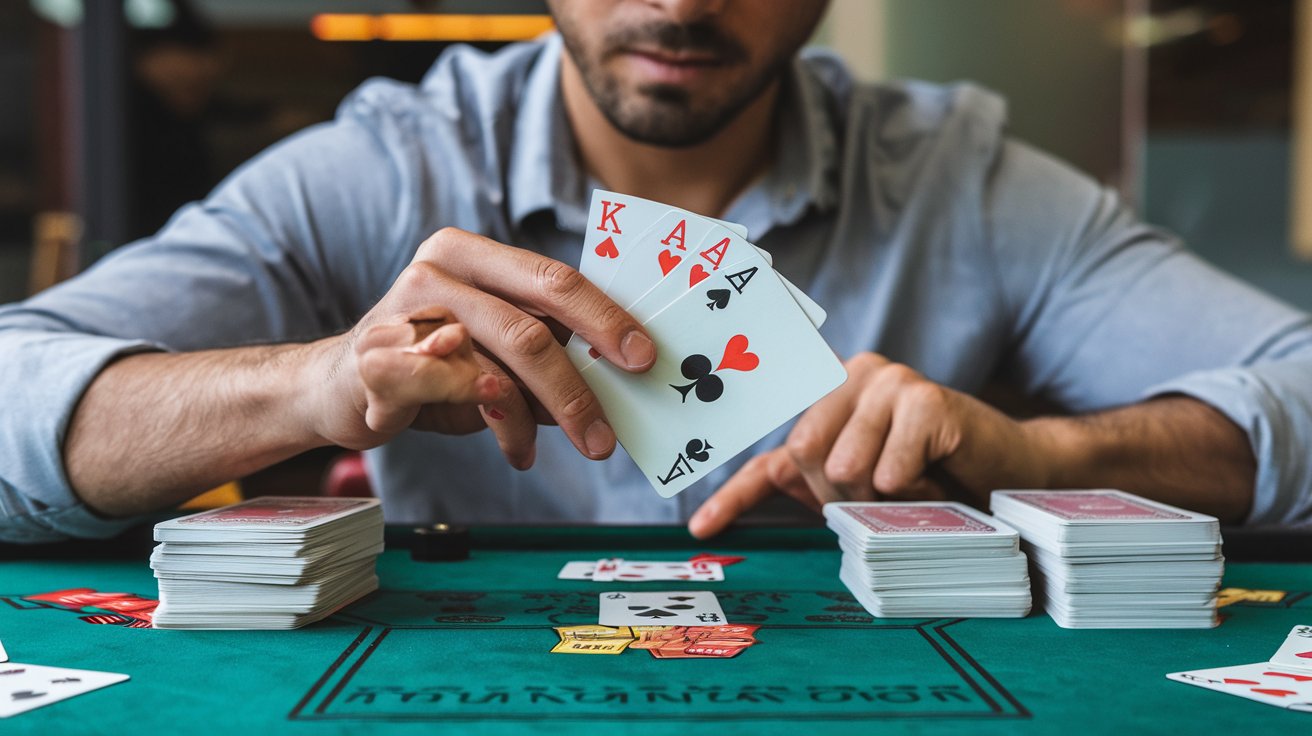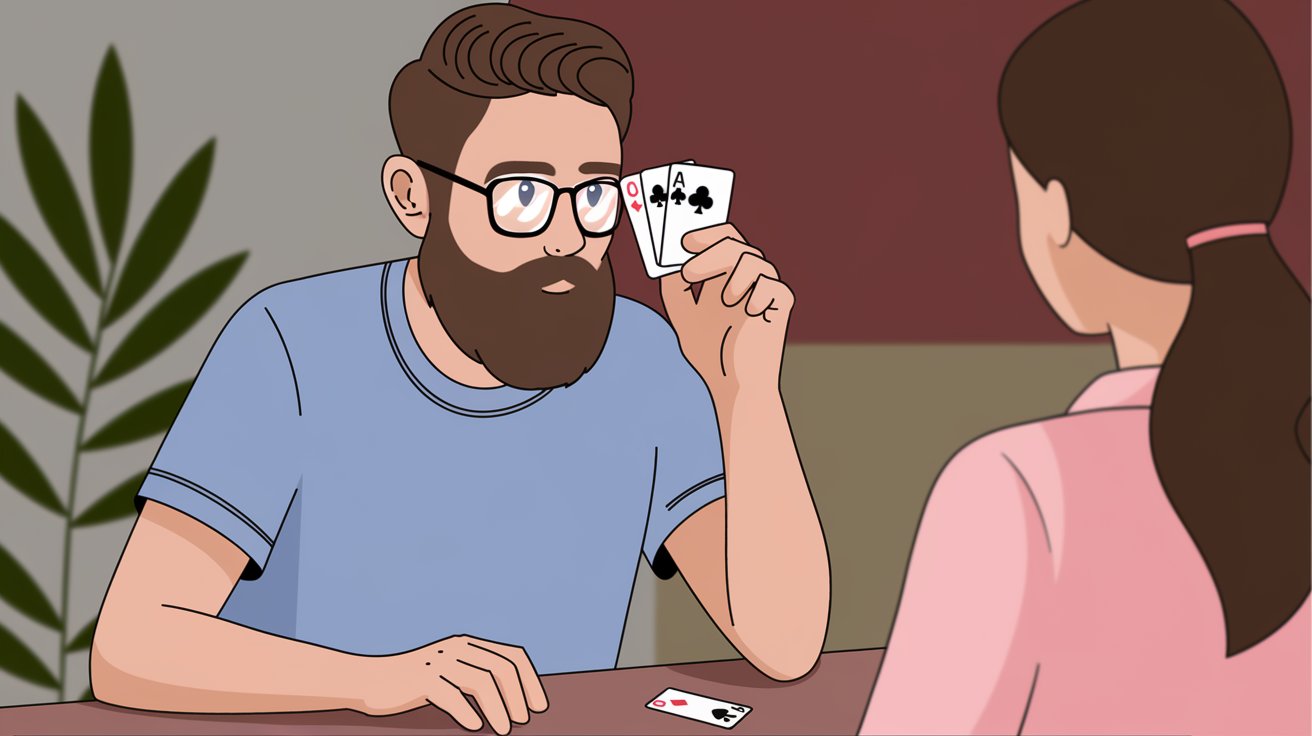Rummy is more than a game of chance—it’s a battle of wits where strategic foresight can make all the difference. One of the most potent strategies in your Rummy arsenal is the ability to predict your opponent’s moves. By anticipating what your rivals are likely to do, you can adjust your tactics, block their strategies, and set yourself up for a winning game. This comprehensive guide explores the art of predicting opponent moves in Rummy and provides actionable tips to help you gain the upper hand.
Introduction: The Power of Prediction in Rummy

In competitive Rummy, every card and every move counts. Success doesn’t solely depend on the luck of the draw but also on your ability to read the game. Imagine knowing what your opponent is likely to do before they do it. This isn’t magic—it’s the result of careful observation, strong memory, and the willingness to adjust your strategy on the fly. Predicting opponent moves allows you to preempt their tactics, deny them key cards, and steer the game in your favor.
SEO Keywords: win at Rummy, predicting opponent moves in Rummy, Rummy strategy, advanced Rummy tactics
Understanding Rummy: A Game of Strategy and Skill
Rummy is a classic card game where players strive to form valid melds—either sets (cards of the same rank) or sequences (cards in consecutive order of the same suit). While the basic rules of Rummy are straightforward, the game involves layers of strategic complexity. Your ability to:
-
Organize your hand,
-
Discern potential melds,
-
And, crucially, anticipate your opponent’s next move
can significantly enhance your chances of winning.
When you predict opponent moves, you’re not just reacting—you’re thinking several steps ahead, much like a chess grandmaster. This proactive approach transforms every game into a dynamic contest where mental agility trumps mere chance.
SEO Keywords: Rummy strategy, competitive Rummy, card game tactics
Why Predicting Opponent Moves Matters

Predicting opponent moves gives you a critical edge in several ways:
-
Preemptive Defense: By anticipating which cards your opponent needs, you can avoid discarding those cards. This minimizes the risk of helping your adversary complete a meld.
-
Strategic Offense: If you know what your opponent is building, you can plan your own sequences or sets to counteract their strategy, even forcing them into making mistakes.
-
Game Flow Control: Being one step ahead allows you to steer the tempo of the game. You can dictate the pace by making quick, calculated decisions, thereby controlling the overall flow of play.
-
Psychological Advantage: Demonstrating foresight puts pressure on your opponents, potentially causing them to second-guess their own strategies or rush their moves.
SEO Keywords: predicting opponent moves, Rummy advantage, strategic foresight in Rummy
Key Techniques to Anticipate Opponent Moves
To successfully predict what your opponents will do, you must hone several key skills. Let’s dive into each technique.
Observational Skills
Observation is the foundation of prediction. In Rummy, keen observation means:
-
Tracking Every Card: Notice every card that is discarded or picked up. The discard pile can tell you a lot about what your opponent might be aiming for.
-
Monitoring Consistency: Pay attention to the cards opponents keep in their hands versus those they discard. This information can hint at their strategy.
-
Spotting Patterns: Over time, you may notice recurring habits. Does a particular opponent always discard a certain suit? Recognizing these patterns can help you anticipate future moves.
Example: If you see an opponent repeatedly discarding high-value cards from the same suit, it might indicate they’re saving lower cards to form a sequence.
SEO Keywords: observational skills in Rummy, card tracking, pattern recognition in Rummy
Memory and Pattern Recognition
Memory plays a pivotal role in predicting moves. Develop your memory by:
-
Replaying Previous Hands: Regularly review past games to understand common strategies and card movements.
-
Memorizing Discarded Cards: Remembering which cards have been discarded helps you deduce which cards are still in play.
-
Recognizing Card Patterns: Over time, you’ll start to see trends in how certain players manage their hand. Use these trends to inform your predictions.
Tip: Practice memory drills and card games that sharpen your ability to recall sequences and card distributions. This can translate directly into improved performance in Rummy.
SEO Keywords: memory in Rummy, card pattern recognition, Rummy memory drills
Reading Discards and Pickups
A significant part of predicting opponent moves comes from understanding the discard and pickup process:
-
Analyze Discards: The type of cards opponents choose to discard often reveals their hidden objectives. For instance, if an opponent discards a card that could complete a sequence, they likely don’t need it, or they’re trying to trick you.
-
Watch Pickups: If an opponent reaches for the discard pile instead of drawing a new card, they might be reinforcing a particular grouping. This simple act can reveal a lot about their strategy.
-
Evaluate Timing: The speed at which an opponent discards or picks up a card can indicate confidence or uncertainty in their plan.
Example: An opponent who hesitates before picking up a card may be evaluating whether that card fits into a complex strategy, giving you an insight into their hand structure.
SEO Keywords: reading discards, Rummy pickups, card movement analysis
Psychological Cues and Body Language
Beyond the cards, your opponents’ body language can be a rich source of information:
-
Facial Expressions: A slight smile or frown can indicate satisfaction or frustration with a move.
-
Gestures: Subtle hand movements or a change in posture may hint at confidence or hesitation.
-
Timing: The pace at which an opponent plays can signal whether they are confident about their hand or uncertain about their next move.
Note: While reading body language is more challenging in online or digital formats, in live games these cues can be invaluable.
SEO Keywords: body language in Rummy, psychological cues in Rummy, reading opponents
Integrating Prediction into Your Overall Rummy Strategy

Once you’ve gathered insights through observation, memory, and psychological cues, the next step is to integrate these predictions into your strategy.
Adjust Your Discards
Avoid giving away what your opponent might need:
-
Defensive Discarding: Based on your predictions, be cautious about discarding cards that might complete your opponent’s melds.
-
Controlled Play: Sometimes, holding onto a card—even if it isn’t immediately useful—can prevent your opponent from capitalizing on it.
Plan Your Melds Accordingly
-
Counter-Strategies: If you anticipate an opponent is close to completing a sequence, consider building a competing sequence with overlapping cards.
-
Offensive Moves: Use your predictive skills to determine when to accelerate your own melding process, especially if you think your opponent is stalling or hesitating.
Set Traps
Create scenarios where your opponent’s predictions can backfire:
-
Bait Cards: Discard a card that seems unimportant to lure your opponent into a false sense of security.
-
Intentional Misdirection: Occasionally, make moves that might lead your opponent to misread your intentions. This can force them to commit to a less optimal strategy.
SEO Keywords: strategic discards, counter-strategies in Rummy, setting traps in Rummy
Advanced Strategies: From Theory to Practice
For seasoned players, integrating predictive strategies into your game requires advanced techniques and constant refinement.
Combine Multiple Data Points
Successful prediction isn’t based on a single cue—it’s the result of synthesizing multiple sources of information:
-
Card Patterns + Memory: Combine what you remember about previous rounds with current patterns to predict which cards are likely still in play.
-
Behavioral Cues + Game Flow: Match your observations of opponents’ behaviors with the pace of the game. For example, if an opponent consistently plays quickly when they’re confident, a sudden slowdown might indicate a change in their strategy.
Dynamic Adaptation
Rummy is a fluid game, and your predictions must evolve with the game’s progress:
-
Continuous Assessment: Constantly update your mental model of your opponents’ strategies as new cards are played.
-
Flexibility: Be prepared to change your tactics mid-game. If your prediction turns out to be incorrect, adapt quickly rather than sticking to a failing plan.
-
Feedback Loop: Use each move as feedback. Whether you correctly predicted an opponent’s move or not, analyze the outcome and refine your approach for future rounds.
Integrate Technology and Analysis
For those serious about improving:
-
Review Game Replays: Many online platforms allow you to review your games. Analyzing these replays can reveal overlooked patterns and missed opportunities.
-
Join Discussion Forums: Engaging with other competitive players in online communities can offer fresh insights and alternative perspectives on prediction tactics.
SEO Keywords: advanced Rummy strategies, dynamic adaptation in Rummy, game replay analysis
Practice Drills to Sharpen Your Predictive Skills
Just like any skill, predicting opponent moves improves with deliberate practice. Here are some drills to enhance your abilities:
Memory Drills
-
Card Recall Exercises: Practice with decks of cards to improve your ability to remember the order of cards played. Over time, this will translate into better performance during real games.
-
Pattern Recognition Games: Engage in games or apps designed to sharpen your pattern recognition. Many cognitive training tools are available that can help improve your attention to detail.
Simulated Rummy Sessions
-
Practice With Varied Opponents: Playing against a variety of styles will expose you to different strategies, forcing you to adapt and refine your predictive skills.
-
Timed Rounds: Set a timer for each round to simulate the pressure of competitive play. Quick decision-making under time constraints can help sharpen your observations.
-
Self-Review: After each game, take a few minutes to reflect on what cues you noticed and which predictions turned out to be accurate. Maintaining a journal of these insights can be beneficial.
Engage in Role Reversal
-
Play Both Sides: Occasionally, try to play the role of the predictor and the predict-ee. By understanding how your own moves appear to others, you can better conceal your intentions and read your opponents more effectively.
SEO Keywords: Rummy practice drills, improve predictive skills, memory drills for Rummy, simulated Rummy sessions
Conclusion: Turning Prediction into Victory
Predicting opponent moves in Rummy is a sophisticated skill that, when mastered, can dramatically tilt the odds in your favor. It’s about combining acute observation with strong memory, reading subtle behavioral cues, and dynamically adjusting your strategy as the game unfolds.
By integrating these predictive techniques into your overall gameplay, you not only avoid giving away critical cards but also actively shape the flow of the match. You set traps, counteract your opponents’ strategies, and, ultimately, pave your path to victory.

Zareb Saleh is a journalist at Gulf Today and a ghostwriter for Gameoholic, specializing in gaming, technology, and digital culture. With a keen eye for industry trends, he delivers insightful stories that engage and inform readers.




